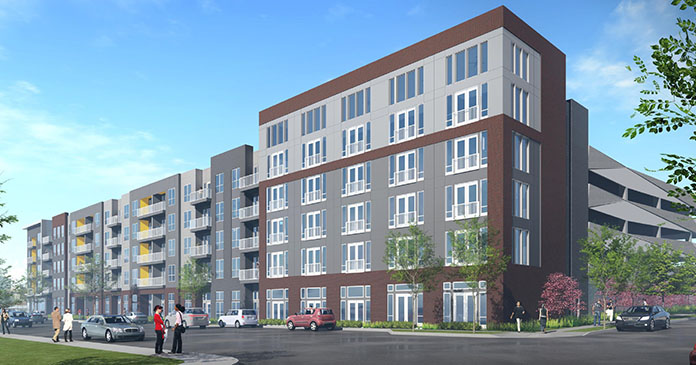
CRG, the real estate development and investment arm of Chicago-based Clayco, announced the launch of a new national residential development strategy that includes $1 billion in multifamily developments over the next two to three years in response to COVID-19.
Industry veteran and CRG Managing Partner J.J. Smith, who has sourced and developed more than $6 billion in residential communities across 100 cities since 2007, has rolled out this new residential development strategy in response to investor demand and changing economic conditions. The strategy will initially target a dozen U.S. markets, particularly in the Sun Belt, with stable rent growth and underserved middle-income multifamily demand.
Due in part to COVID-19, CRG’s strategy will prioritize Class B, workforce housing aimed at people earning between 80 percent to 120 percent of U.S. Average Median Income (AMI). For this middle bracket seeking more housing options outside of the city, the firm will pursue development sites located in the first- and second-ring suburbs of urban centers.
Dubbed “Essential” housing communities by CRG, these developments will be specifically designed for the work-from-home resident, with pocket offices and what Smith calls “Zoom-worthy common spaces” for the remote-work crowd.
“The pandemic has changed what middle-income earners want in a home and we think the effects will be long term,” said Smith. “After conversations with investors, we pivoted our focus toward building for the masses not the classes in locations that will provide a refuge from crowded areas without sacrificing quality of life, good school districts and proximity to job centers. Our plan addresses a development need which has largely gone underserved, and the pandemic has only further highlighted the need for these types of residential offerings.”
According to the U.S. Census Bureau and U.S. Department of Housing and Urban Development, this new-construction “Essential” product has largely been missing for middle-income residents. In the Midwest, for example, the last large-scale development surge for middle-income families delivered about 1,400 communities in the 1970s, but then only approximately 800 between 1974 and 1994.
In recent years, these projects have been deemed too expensive to build, but CRG’s vertically integrated platform with Clayco creates significant efficiencies to lower construction costs. Additionally, land prices have seen steep declines during the pandemic, further creating opportunity for the firm.
CRG is currently building its first “Essential” community, Broadway Chapter, in Fort Worth, Texas. The 320,000-square-foot project located at 401 Hemphill St. is a five-story, wood-framed multifamily complex. It’s scheduled for delivery in summer 2021.
“We believe we’ve perfectly timed our first ‘Essential’ community at Broadway Chapter as market occupancies are high and rental rate growth has remained positive,” Smith said. “We have been able to incorporate many of today’s design features that will make working from home a seamless experience.”
CRG will continue to develop Class A, urban-infill communities in major cities. The firm will be more selective about market and site selection as well as its target renter demographic, but anticipates serving young professional and empty nester segments depending on individual market needs.
“Large scale, urban-infill projects can take three to four years to develop and construct, and we are bullish that urban living will continue to remain desirable in the years ahead,” added Smith. “Our firm’s pipeline will feature a balanced mix of product types with a near-term focus on quicker-to-market Class B wood-frame communities while still lining up the longer lead time Class A infill opportunities.”
CRG has delivered more than 200 million square feet of commercial assets, including industrial and multifamily,exceeding $12 billion in value. The firm’s immediate development activity is located across the Sun Belt and major markets like Atlanta, Austin, Chicago, Dallas, Denver, Minneapolis, Phoenix and Salt Lake City, as well as Charlotte, North Carolina and Nashville, Tennessee, with intent to continue expanding nationally.
“We’ve worked hard and learned a lot while institutionalizing CRG’s industrial investment and development activities, opening five regional offices and delivering more than 10 million square feet annually,” said Shawn Clark, president of CRG. “This experience sets the foundation to recreate that kind of success for our residential business. We spoke extensively with our institutional investors, and these new offerings were developed as a way to meet investor demand and stay ahead of the evolving market.”









